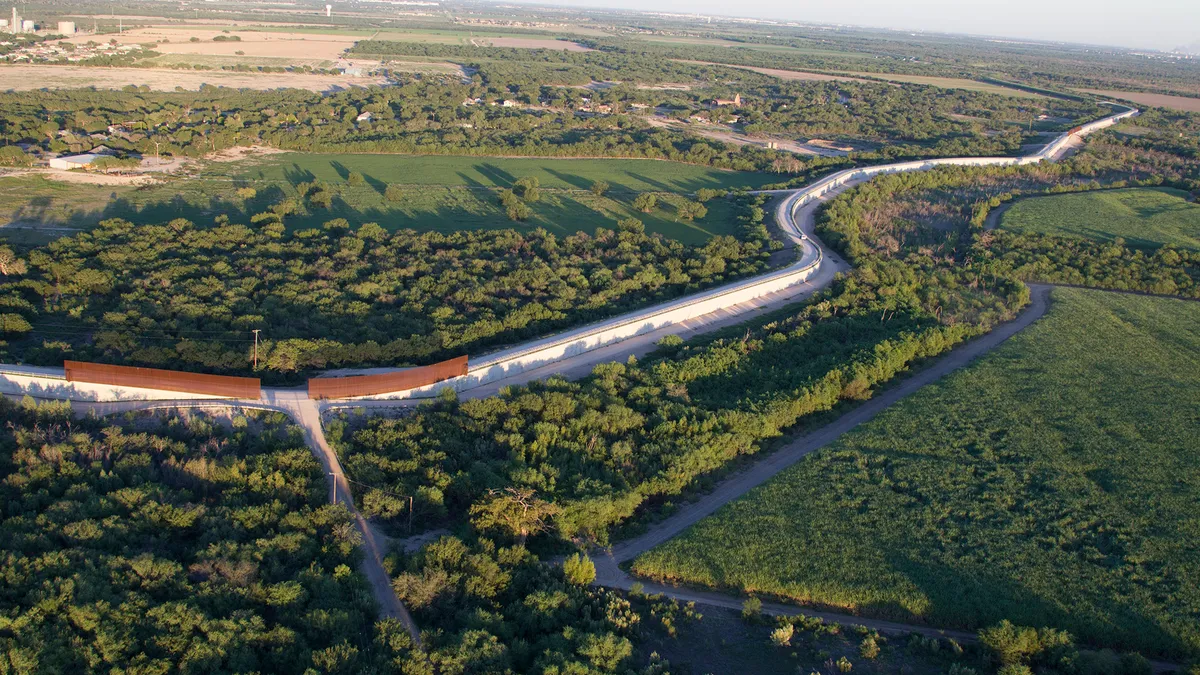Dive Brief:
- The Pentagon, according to Stars and Stripes, is taking a look at its current roster of construction projects to determine how much money could be used for a U.S.-Mexico border wall. Funds could only be diverted from military projects in the event that President Donald Trump declares a national emergency, which he could do in order to bypass Congressional Democrats and their refusal to appropriate $5.7 billion for border security. Such an action would likely put an end to the partial federal government shutdown, now entering its fourth week.
- If the president declares a national emergency at the southern U.S. border, the Department of Defense would be able to tap money that has been allocated for military construction but that remains uncommitted to specific projects. In the current fiscal year's defense budget, there is approximately $10 billion up for grabs plus another $13 billion that has accumulated during the last five years. In a state of emergency, the Trump administration could also choose to tap into almost $14 billion of disaster funding that has been allocated to the Army Corps of Engineers but that has not yet been spent.
- Experts told Stars and Stripes that a national emergency declaration is sure to come under legal challenge, however, because the wall might not meet the definition of military construction. In addition, in such a scenario, the defense secretary is permitted to access military construction funds only for construction projects that give support to deployed troops.
Dive Insight:
Despite the controversies surrounding the proposed barrier — i.e. who is going to pay for it and its central role in the longest federal shutdown in the country’s history — there is construction activity underway along the border.
There are barrier replacement and repair projects either planned or underway in San Diego, Arizona and New Mexico, but the first contract for new wall construction, according to U.S. Customs and Border Protection, was a 6-mile section of a border-levee wall system in Texas’ Rio Grande Valley.
Galveston, Texas-based contractor SLSCO was officially awarded the $145 million contract in November and will build and install "tactical infrastructure,” which consists of a reinforced concrete levee wall; 18-foot-tall steel bollards on top of the concrete wall; lighting; and a video surveillance system.
Instead of a concrete wall, the president said he is prepared to build a steel bollard or slat-type barrier, but a steel mock-up — one of eight prototypes made of reinforced concrete and other materials — was able to be breached by a saw. The administration called that model an "old design," and said that the iteration under development now would be much stronger.











